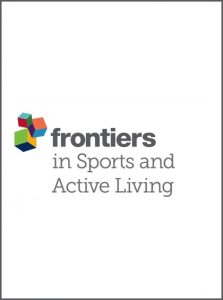Publications

Passive lower leg stiffness changes during a 10 k run
Authors: Anh Phong Nguyen 1, Laurent Bosquet 2, Philippe Mahaudens 1, Christine Detrembleur 1
Affiliations:
- Universite Catholique de Louvain, Institut de Recherche Experimentale et Clinique, Neuromusculoskeletal Lab, Brussels, Belgium
- Universite de Poitiers, UFR-STAPS, Move Lab, Poitiers, France
Journal: Frontiers in Sports and Active Living - October 2025, Volume 7, Article no. 1662460 (DOI: 10.3389/fspor.2025.1662460)
-
Field & Applications:
- Sport
- Muscle development / Performance
The primary aim of this study was to assess lower limb stiffness in healthy runners over the course of a 10km race at a competitive pace, with a secondary focus on investigating the tissue-specific changes in stiffness of lower limb structures during the running event.
Twenty participants (3 women and 17 men) were recruited for this study. Passive stiffness measurements were assessed on the Achilles tendon, medial gastrocnemius, patellar tendon, and plantar fascia using a myotonometry device. Measurements were recorded before, during, and after the 10k run.
Our findings reveal a moderate decrease of 7% (p = 0.044, hedge’s g = 0.51) of the plantar fascia’s passive stiffness at the end of the trial. Contrary to the initial hypothesis, which predicted a decrease in Achilles tendon stiffness during the race, our study findings indicate that the stiffness of the Achilles tendon, patellar tendon, and medial gastrocnemius remained constant.
The plantar fascia finding is novel as few studies explore foot myofascial tissue. Further investigation is warranted to elucidate the mechanisms behind the differential response of the plantar fascia compared to other tissues during prolonged running activity.
Keywords: myotonometry, running, tendon, myofascial tissue, biomechanics
The present findings demonstrate that repeated, in-field stiffness assessments using myotonometry are feasible during a 10k run, enabling the monitoring of specific tissue responses such as those observed in the plantar fascia. However, the clinical relevance of stiffness changes remains uncertain. Assessing stiffness during running efforts and monitoring changes in stiffness during recovery could provide valuable insights into the progression and resolution of pathological conditions, such as tendinopathy or fasciapathy. Accordingly, the present findings should be considered hypothesis-generating rather than prescriptive for injury prevention.
The present study rejected the initial hypothesis that Achilles tendon stiffness would decrease during a 10km run, as AT, PT, and MG stiffness remained unchanged. In contrast, plantar fascia stiffness decreased by approximately 7%, suggesting a tissue-specific response to prolonged running. These findings underscore that lower limb structures do not adapt uniformly to running loads and highlight the PF as a structure of particular interest for future work on performance and injury risk.


